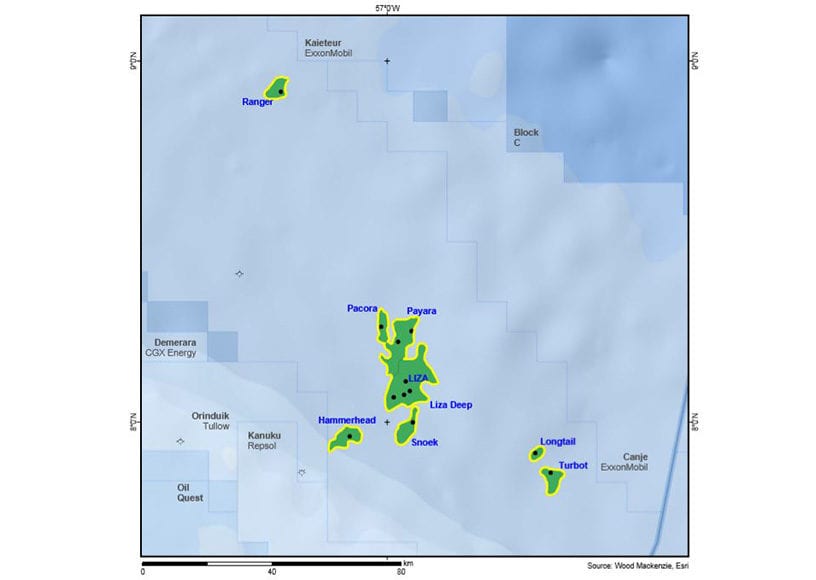With only 19 discoveries to date, geological experts at Wood Mackenzie posit that the Guyana basin stands as the most exciting exploration hotspot, with ExxonMobil leading the way in showcasing the basin’s outstanding prospectivity.
In one of its special reports seen by OilNOW, the experts described the basin as being a well-developed half-graben whose principal source rock is the world-class Canje formation which is of Cenomanian to Turonian age.
WoodMac officials said this is equivalent to source beds found in some of the world’s most envied hydrocarbon provinces like Venezuela, Colombia and Trinidad. OilNOW understands that the Guyana basin source rock is very mature, and migration is known to have occurred over distances greater than 200 kilometres.
Thus far, three plays have been established in the basin. WoodMac experts noted that most discoveries by ExxonMobil in the Stabroek Block have been made in Late Cretaceous, turbidite sandstone reservoirs in stratigraphic traps while adding that reservoir quality is understood to be excellent, with multi-Darcy permeability. They were keen to note that the Liza-3 appraisal well was deepened into Early Cretaceous sandstone, making the Liza Deep discovery.
OilNOW understands that the Ranger discovery which is 100 kilometres to the northwest of the Liza cluster, opened a Cretaceous-aged carbonate build-up with a Tertiary clastic cover. It is described as a large structural trap with a four-way closure.
As for the Hammerhead find which was made in August 2018, WoodMac experts said that this established the third play in the Guyana basin just to the southwest of the main complex, in a Miocene sandstone reservoir which they believe lies in an amalgamated deepwater channel complex. Even though ExxonMobil has made 16 discoveries to date, WoodMac said that world-class exploration upside remains on the Stabroek block while adding that the offshore concession is a giant, almost 27,000 km2. This is equivalent to 1,150 standard deepwater US Gulf of Mexico blocks which remain largely unexplored.



